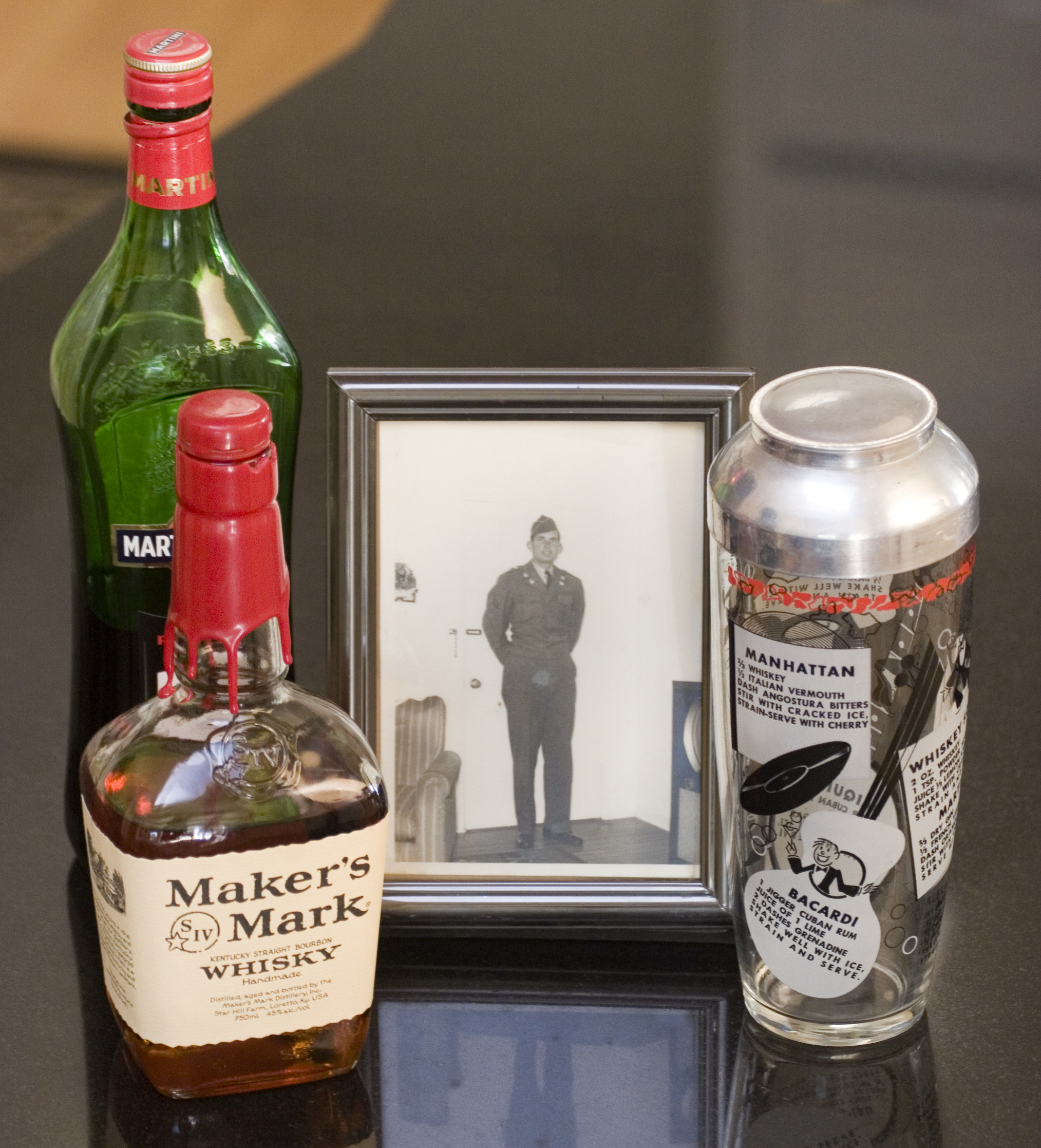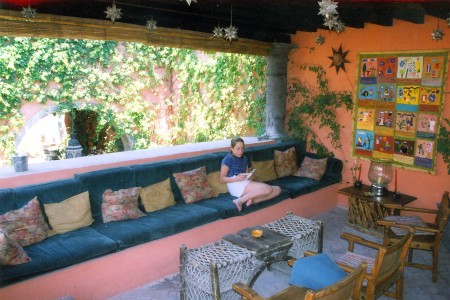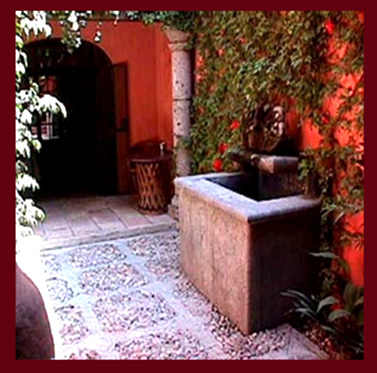Today is Thanksgiving and, like everyone else, I’m busy trying to burn a turkey and ruin the gravy so rather than a new blog, I’m running a post that originally ran on Thanksgiving in 2009.
My father was more Jackie Gleason than David Niven, more Walter Mathau than Fred Astaire. Sort of the blue-collar Frank Sinatra, I guess you’d say, a man’s man who loved T-bone steaks, Herb Albert and the Tijuana Brass, and playing ping-pong with my mother. He admired Steve McQueen, didn’t own a suit, and always won a free turkey around Thanksgiving in his bowling league. Always.
Oddly enough, his drink of choice was a Manhattan. Which, even as a kid, I sort of admired and was embarrassed by at the same time. I’ll tell you a story: When I was 10, maybe 11 years old, my dad would take me with him to a bowling alley on Thursdays, league night, where I’d get paid a buck plus all the cokes I could drink to keep score for my father’s team. All these guys—most a little younger than my dad—would down beer all night, but not my father. He’d order a Manhattan from the gum-smacking bar girl and she’d bring it to him on the rocks, in a plastic cup. At which point my father would pull out this ridiculous cocktail shaker, with drink recipes on it, from his shoe bag, and, after dumping the contents of the cup into it, strain it into a ribbed martini glass, which he also kept in his shoe bag. Then he’d pull out an old jam jar full of brandied cherries he’d made himself, and plop one of the scarlet bombs in his glass and another in my coke. He called my drink a virgin Manhattan—“which, as you’ll discover, is a very rare thing”—chuckling as he clinked my glass of cherry coke. This is the part that always embarrassed me: the clinking of glasses, the lame joke. This is the part I admired: his bowling buddies always treated him like a bon vivant, and me like a young prince. It left an impression.
But I came of age in a time of Harvey Wallbangers, tequila sunrises, and California wines hawked by Orson Welles. The first time I had a real Manhattan was the day my father died. I liked it immensely. I liked the way the rosy hue of sweet vermouth deepened the amber color of the whiskey. I liked its smoky sweetness, the way just the slightest sip filled my mouth with lubricious lushness. Most of all, I liked the way it comforted me at a time when I felt inconsolable. My father’s Manhattan immediately became my signature drink.
Here’s what I believe: The Manhattan is the Cary Grant of cocktails. The most charming, the most elegant, the most sophisticated of libations you can order. And this isn’t just me talking. Gary Regan, who wrote The Bartender’s Bible, says, “Quite simply (the Manhattan) is the finest cocktail on the face of the earth.” It is, he wrote in The Joy of Mixology, “the drink that changed the face of cocktails.” It’s the grandfather of the martini, pre-dating it, and the sine qua non of all French-Italian cocktails. It’s also inherently sexy (though I’ve yet to meet a woman who could actually tie the cherry stem into a knot using just her tongue).
There’s no exact record of who created the first Manhattan, but the most popular story revolves around a reception hosted by Jennie Churchill, Winston’s mum, for her father’s good friend, Samuel James Tilden, the governor of New York, at the Manhattan Club in 1874. Legend has it that Churchill asked the bartender to come up with something special for the evening, in celebration, and in a New York minute, the Manhattan was born. Not the Manhattan my father drank, of course, since in those days the whiskey of choice was rye and the maraschino cherry had yet to come along.
In fact, the Manhattan has gone through a number of permutations over the decades—from rye, originally, to Canadian whisky during Prohibition to my father’s preference, bourbon, in the 60s. And there’s always been disagreement over the type of vermouth to use—and just how much. The story goes that the original Manhattan was made with equal amounts of both dry and sweet vermouths, and this is still called a Perfect Manhattan, though in my mind there’s nothing perfect about it.
My father made his with Italian vermouth, as called for on the recipe of his goofy cocktail shaker. Back then, people referred to dry vermouth as French and sweet vermouth as Italian because that’s where they came from. These days there are all sorts of vermouths out there, including sweet whites, so you have to be more specific.
Now about the whiskey. Hardly anyone makes a rye Manhattan these days, largely because hardly anyone makes a rye whiskey (which, by law, needs to be made with at least 51% rye grains). But if you order a Manhattan back East and don’t specify the liquor, most bartenders will use a Canadian whisky—usually Canadian Club—which they will tell you is a rye whiskey. Which is nonsense. Almost all Canadian whiskies are simply blended, which means they come from a number of different barrels (Crown Royal, for instance, uses up to 50 whiskies to create its blend). Using a blended Canadian whisky to make a Manhattan is like using surimi to make a crab salad—please don’t do it. Order a straight bourbon. I prefer Maker’s Mark but Knob Creek is just as good.
When my father died, I inherited two things: his old cocktail shaker, which I still use, and his recipe for what truly is the perfect Manhattan. First of all, use orange bitters instead of the more popular Angostura. Shake exactly two drops into a martini glass, swirl it around, and dump out any excess that doesn’t cling to the glass. In a cocktail shaker half-filled with crushed ice, add two shots of Maker’s Mark and one shot of Martini & Rossi sweet vermouth (I find Cinzano a little too robust and Noilly Prat too cloying—you want to taste the bourbon, not the vermouth). Swirl the mixture around but don’t bruise it; you don’t want a cloudy Manhattan. Strain into a martini glass and add a maraschino cherry—or, like my father, a brandied cherry you’ve made yourself by dousing pitted, fresh cherries in a jar of brandy.
So today, before I put my brined, organic, free-range turkey in the oven, I’ll pull down my father’s Mad Men martini shaker from the top shelf in the dining room. I’ll add a couple of ounces of Maker’s Mark, an ounce of sweet vermouth, and lightly swirl my father’s concoction. Then I’ll take that first bracing sip and smile. And at dinner, I’ll make a Thanksgiving toast–to my father’s Manhattan.




Recent Comments